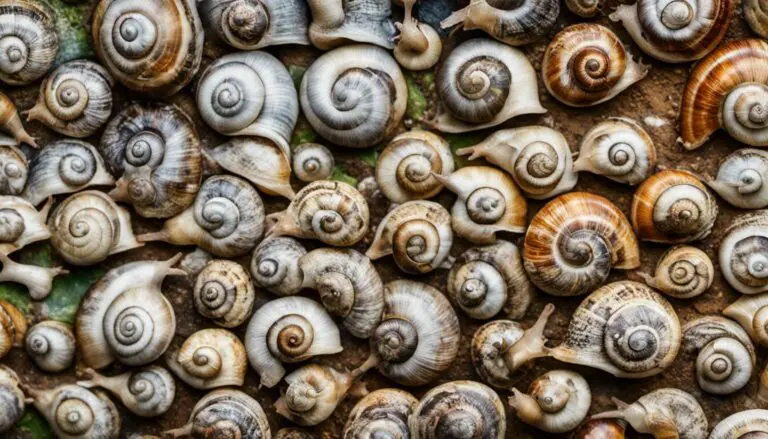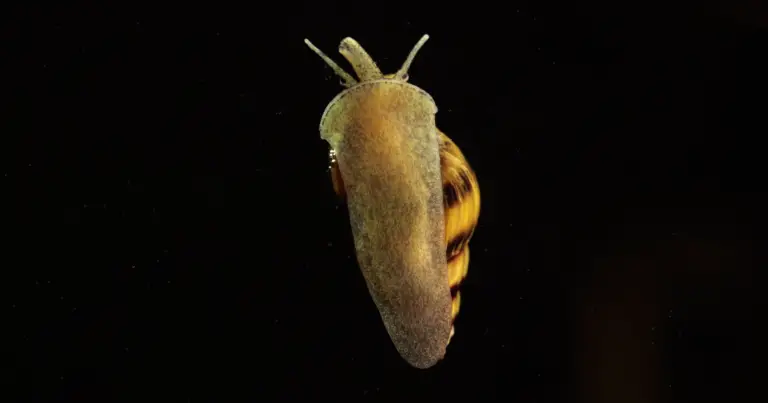Malaysian Trumpet Snails: A Comprehensive Guide for Aquarists
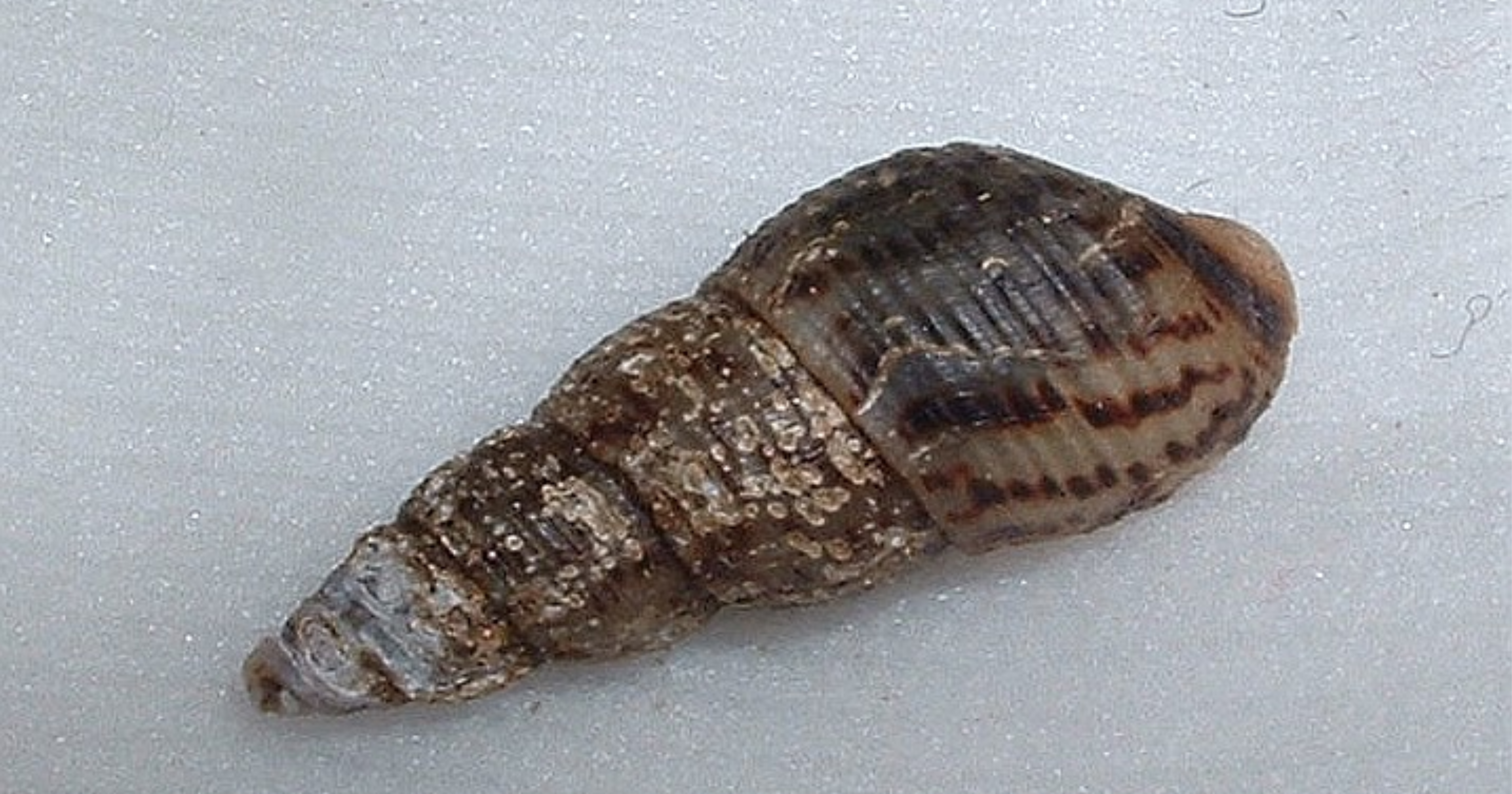
Malaysian trumpet snails (Melanoides tuberculata) are small, hardy, and adaptable creatures in various aquarium setups worldwide. They are often considered the perfect option for novice snail enthusiasts or anyone looking to add a unique invert to their tank. These parthenogenetic gastropods, native to Africa, have spread to almost every corner of the world, making them an incredibly successful invasive species.

In your aquarium, these trumpet-shaped mollusks are known for more than just their intriguing looks. They are efficient scavengers, feeding off algae, leftover food, and even dead plant matter. With such diverse dietary habits, Malaysian trumpet snails can aid you in maintaining a clean and balanced ecosystem within your tank. However, be cautious about their tendency for rapid reproduction, as an uncontrolled population can lead to an imbalance in your underwater realm.
Moreover, Malaysian trumpet snails have unique characteristics that distinguish them from others. They can burrow in your tank’s substrate, which helps them aerate the soil, a process that benefits aquatic plants. Additionally, they possess an operculum—a protective “trapdoor”—to shield themselves from potential predators.
By incorporating these intriguing creatures into your aquarium, you can observe their fascinating habits up close and appreciate their undeniable charm.
Contents
Table of Contents
Overview of Malaysian Trumpet Snails

Scientific Classification
Malaysian Trumpet Snails, scientifically known as Melanoides tuberculata, are part of the Thiaridae family. These freshwater snails have an operculum, characterized by their adaptability and hardiness when it comes to thriving in various aquarium conditions.
Common Names
In addition to their scientific name, these snails go by several other names, such as Malaysian Burrowing Snails, Malaysian Live Bearing Snails, and Red-Rimmed Melania. When referring to them in the context of aquariums, they are often called Malayan/Malaysian Trumpet Snails (MTS).
Origins and Natural Habitat
Malaysian Trumpet Snails are native to Southeast Asia and inhabit tropical freshwater environments. They can be a great addition in your aquarium due to their ability to adapt to a wide range of water parameters. Trumpet Snails are also nocturnal creatures, making them a fascinating addition to your aquarium’s cleanup crew as they actively remove algae, waste, and debris.
Physical Attributes

Malaysian Trumpet Snails (Melanoides Tuberculata) exhibit a unique and interesting appearance. Their elongated, conical shell is adorned with various colors and patterns, making them visually captivating in your aquarium.
The shell’s primary color is often a shade of brown, with variations ranging from light to dark. Adding to the aesthetic appeal, you may observe black and red spots and lighter rings on the shell, forming intricate patterns. As they mature, these snails are typically between 2 to 4 cm (0.8 – 1.5 inches).
As you further study their structure, you’ll notice that their elongated body consists of tentacles and eyes at the base. The tentacles are vital for sensory perception and add a charming touch to their overall appearance.
In addition to the visually pleasing outer shell, Malaysian Trumpet Snails possess a trapdoor, or an operculum, to protect their soft body. Should they feel threatened, they can quickly close the trapdoor, providing a safe barrier from potential harm.
When observing these fascinating creatures in your aquarium, it’s essential to appreciate their intricate design and versatile appearance. Their unique physical features and adaptability to various water parameters make them a popular choice among aquarists.
Behavior and Temperament
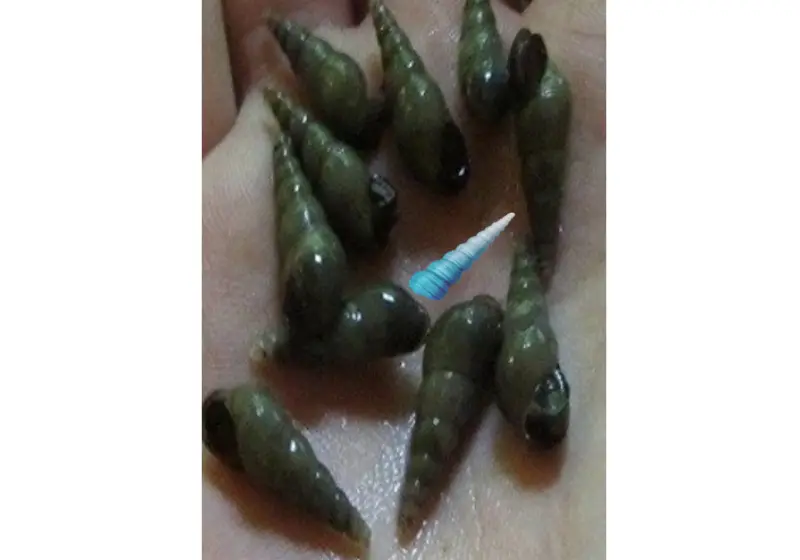
Malaysian Trumpet Snails are intriguing creatures with a unique temperament, making them an interesting addition to your aquarium. They are native to Asia and have adapted well to various aquarium environments.
These snails are generally slow-moving creatures so you can observe their fascinating behavior leisurely. They tend to hide during the day, seeking shelter under rocks, plants, or other decorations in your aquarium. This habit helps them avoid predators and conserve their energy for nighttime activity.
Malaysian Trumpet Snails become more active at night, exploring the aquarium and searching for food. They are particularly helpful for maintaining a clean tank environment as they enjoy consuming algae, leftover fish food, and decaying plant matter. Their constant foraging helps aerate the substrate, promoting a healthy ecosystem for aquarium inhabitants.
In terms of their temperament, these snails are peaceful and non-aggressive. They coexist well with other tank inhabitants, including snail species and most small, non-aggressive fish. However, avoid housing them with fish known to eat snails, as this will cause unnecessary stress and might lead to the loss of your Malaysian Trumpet Snails.
By understanding the behavior and temperament of Malaysian Trumpet Snails, you can ensure their well-being and create a harmonious environment in your aquarium. Remember that they are best appreciated at night when they showcase their intriguing activity, and rest assured that they are diligently keeping your tank clean and healthy.
Habitat Requirements in Aquarium
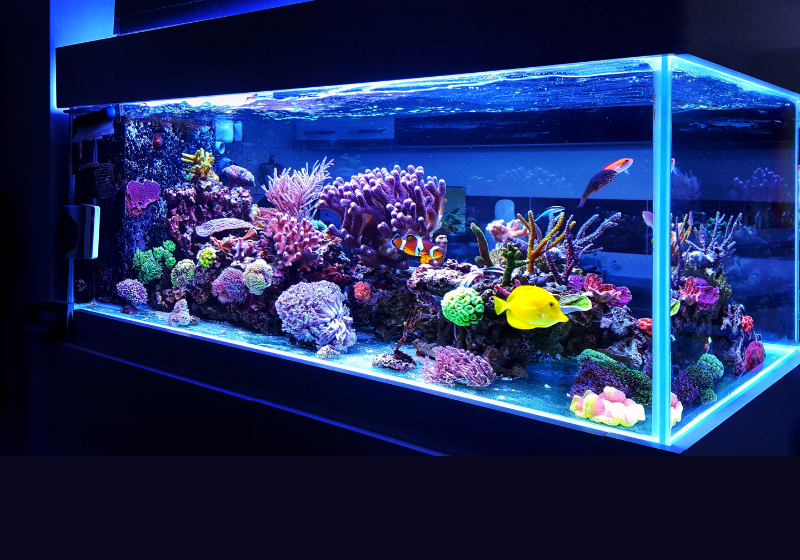
Tank Size Requirements
When keeping Malaysian trumpet snails in your aquarium, ensuring they have the proper environment is important. A suitable tank size would be at least 10 gallons to accommodate the snails comfortably. Bigger aquariums allow for better water quality and more space for the snails to thrive.
Preferred Substrate
Malaysian trumpet snails do best in substrates that are muddy to sandy. This type of substrate allows them to burrow and hide, which is a natural behavior for this species. Ensure the substrate is at least 2-3 inches deep to provide enough space for burrowing and laying their eggs.
Temperature Needs
Water temperature plays a crucial role in your snails’ health. Maintain a consistent water temperature between 72°F and 82°F (22°C to 28°C) in your aquarium. This temperature range helps promote optimal growth and reproduction for Malaysian trumpet snails.
Water Hardness and pH Requirements
Malaysian trumpet snails can thrive in a wide range of water hardness and pH levels. These snails’ ideal water hardness (GH) is 5 to 15 dGH, and the recommended carbonate hardness (KH) level should be 3 to 10 dKH. As for pH, keep it between 7.0 and 8.0 for the best results. Proper water parameters contribute to strong shell development and overall snail health.
Remember to maintain water quality by regularly monitoring the water parameters, performing partial water changes, and filtering out harmful elements like copper, which is toxic to snails. You can ensure that your Malaysian trumpet snails survive and thrive by providing the right habitat in your aquarium.
Feeding and Diet
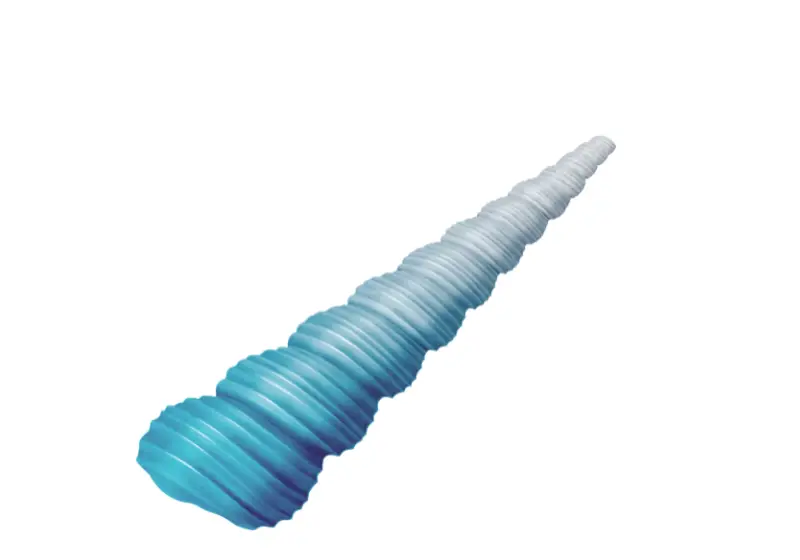
Malaysian Trumpet Snails (MTS) are omnivores, meaning they consume various food sources in their diet. They are particularly fond of algae and organic matter, making them a great addition to your aquarium to help keep it clean and healthy.
In your aquarium, these snails will feed on algae growing on the surfaces, helping to control algae overgrowth. They will also consume debris and waste present in the tank, which breaks down into ammonia and nitrate. By feeding on this waste, MTS contributes to keeping your tank’s water parameters in check.
Although they efficiently consume algae and debris, you should also provide a well-balanced diet to keep them healthy and active. You can offer them sinking pellets specifically formulated for snails or similar invertebrates. Additionally, supplement their diet with fresh vegetables like spinach, cucumber, and zucchini, which can be blanched to help them sink to the bottom of the tank.
Malaysian Trumpet Snails are nocturnal, so you will most likely observe them feeding during the night. If you’re concerned about overfeeding, you can adjust the amount and frequency of their food based on their consumption rate.
A proper diet for your Malaysian Trumpet Snails should include algae, organic debris, sinking pellets, and fresh vegetables. By offering a variety of nutrients, you will ensure the well-being and longevity of these fascinating invertebrates while maintaining a clean and healthy aquatic environment.
Malaysian Trumpet Snail Care and Breeding: The Hard-Working Clean-Up Crew!
Breeding and Reproduction
When breeding Malaysian Trumpet Snails, understanding their reproductive process will help you control their population in your aquarium. These fascinating creatures reproduce rapidly, so monitoring the number of snails in your tank may be beneficial.
Malaysian Trumpet Snails are livebearers, meaning females give birth to live offspring rather than laying eggs. The snails are also hermaphroditic, possessing both male and female reproductive organs. However, they still require a mate for fertilization.
An environment with stable water parameters and a consistent diet is essential to encourage breeding. The water temperature should be maintained between 72-78°F, with a pH level around neutral. Offering them a calcium-rich diet, like cuttlebone or crushed eggshells, supports healthy shell growth for both adults and offspring.
Once the snails reach sexual maturity, they can produce a new generation of offspring approximately every two weeks. One of the challenges you may encounter is controlling overpopulation, as Malaysian Trumpet Snails are known for their rapid reproduction rate.
Keep a close eye on the number of snails in your aquarium. Should their population grow too large, you can manually remove some or control their numbers by limiting the food in the tank. Another effective approach is introducing natural predators, such as Assassin Snails or certain species of fish, to keep their numbers in check.
In summary, the breeding and reproduction process of Malaysian Trumpet Snails can lead to a quickly growing population. By understanding their reproductive habits and ensuring a suitable environment, you can better manage and enjoy these interesting snails in your aquarium.
Common Diseases and Problems

Like other aquatic species, Malaysian Trumpet Snails can sometimes be affected by diseases and problems. Awareness of these issues and taking the necessary precautions can help ensure your snails thrive in your aquarium.
One common issue with Malaysian Trumpet Snails is parasitic infections. In some cases, these infections may not harm the snail but can pose a risk to other tank inhabitants. Be sure to observe your snails for any signs of parasitic activity, like the presence of small, moving organisms on the snail’s shell.
Bacterial infections can also be a concern, as they may weaken the snail and expose it to other infections. If you notice your Malaysian Trumpet Snails suddenly exhibiting lethargic behavior or failing to eat, they might be dealing with a bacterial infection. To reduce the risk of bacterial infections, maintain good water quality. Regular water changes, substrate cleaning, and quality filters can help keep your tank healthy.
Overpopulation can become a problem if too many snails are in a tank, leading to unhealthy living conditions. Malaysian Trumpet Snails reproduce rapidly, and an unchecked population can lead to depletion of the food supply, increased waste production, and higher stress levels for all tank inhabitants. To address this issue, monitor the snail population and take necessary steps, such as introducing natural predators or manually removing excess snails.
Lastly, be aware of tank pests that threaten your Malaysian Trumpet Snails. Some species, like planarians or certain leeches, can potentially harm or kill your snails. Keep an eye on the tank and take action if you see any signs of pests.
By being mindful of these potential problems and maintaining a healthy tank environment, you can ensure that your Malaysian Trumpet Snails continue to thrive and contribute to a balanced aquarium ecosystem.
Role and Benefits in Aquarium

Contributions to Organic Waste Management
Malaysian trumpet snails (Melanoides tuberculata) are excellent scavengers that help maintain a clean and balanced aquarium. They consume various types of waste, such as:
- Algae
- Leftover food
- Decaying plant matter
By feeding on this organic waste, they contribute to the overall health of your aquarium’s ecosystem. They reduce the amount of excess nutrients and help prevent potential issues such as poor water quality and the growth of harmful bacteria.
Interactions with Live Plants
One of the key benefits of Malaysian trumpet snails is their compatibility with live aquatic plants. They serve a useful purpose in your freshwater planted tanks by consuming algae that accumulate on surfaces, which assists in keeping your substrate healthy. However, they generally don’t harm healthy plants or uproot them. This makes them a great addition to your aquatic plant setup and ensures a flourishing underwater garden.
Function in Community Tank
Malaysian trumpet snails are beneficial in a community tank with other aquatic pets. They are effective cleanup agents and enjoyable to watch as they move around the aquarium to look for waste and algae. Moreover, their unique appearance, featuring spiral-shaped shells and various colors, adds an intriguing visual element to your tank. These peaceful creatures can be easily integrated into a community tank, coexisting well with other aquatic species without competing for resources or causing conflict.
Compatibility with Tank Mates

As an aquarist, it’s essential to consider the compatibility of Malaysian Trumpet Snails (MTS) with other tank mates. These snails are generally peaceful and can easily coexist with various fish species and invertebrates, making them suitable additions to community aquariums.
When selecting tank mates for your Malaysian Trumpet Snails, it’s best to avoid predatory fish, such as loaches or puffers, which can potentially view these snails as a food source. Instead, opt for smaller, peaceful fish species that won’t disturb the snails.
Consider adding fish like:
- Tetras
- Rasboras
- Guppies
- Corydoras
- Livebearers
These fish types can coexist with your snails without causing any harm.
However, be cautious with larger, aggressive fish or those that feed on invertebrates—these will not be good companions for the MTS. Additionally, while MTS can live with shrimp and other small aquatic invertebrates, ensure adequate hiding space in the tank so both species can coexist peacefully without stress.
When setting up your aquarium, maintain a healthy, clean water environment and appropriate water parameters to ensure the well-being of all inhabitants, including your snails. By doing so, you’ll have a thriving, diverse aquatic ecosystem that brings joy for years.
Potential Challenges and Disadvantages

Dealing with Overpopulation
One common challenge with keeping Malaysian trumpet snails in your aquarium is overpopulation. These snails reproduce quickly and can become a pest if their numbers are uncontrolled. As their population increases, so does their demand for food, leading to competition with your other aquatic inhabitants.
To keep your Malaysian trumpet snail population in check, you can try the following:
- Limit the snails’ food supply by not overfeeding your fish.
- Introduce natural predators of the snails, such as assassin snails or certain fish species.
- Manually remove some snails from the tank regularly.
- Be cautious with snail-repelling substances like copper, as they may harm your other tank inhabitants; always follow the recommended dosage if using any chemical treatments.
Potential for Invasiveness
While beneficial in small numbers, Malaysian trumpet snails can become invasive if released into the wild. Their ability to burrow in the substrate allows them to hide from predators, making it difficult to eradicate them once they’ve established themselves in a natural environment. If you are dealing with overpopulation in your tank, ensure you never release these snails into local waterways.
To prevent the accidental introduction of Malaysian trumpet snails to non-native environments, consider the following precautions:
- Quarantine any new plants or decorations, as trumpet snails may hitch a ride on these items.
- Monitor your tank regularly for signs of snail infestations and take appropriate action.
- In case you need to dispose of excess snails, consider options like giving them away to fellow aquarists or freezing them before disposing of household waste.
By taking these measures and being responsible with your Malaysian trumpet snails, you can avoid potential challenges and disadvantages while still enjoying their benefits in your aquarium.
Interesting Facts: Malaysian Trumpet Snails

Malaysian trumpet snails, also known as red-rimmed melania or Melanoides tuberculata, belong to the family Thiaridae and are a species of freshwater snails with an operculum. They are quite hardy and adaptable, thriving in various aquarium environments, making them perfect for novice snail owners or aquarists looking to add a unique invert to their tank.
Originating from Southeast Asia, Malaysian trumpet snails have spread to various parts of the world, including Africa, Venezuela, Brazil, and Colombia. They are an invasive species, which has led to their presence in home aquariums throughout the United States. Despite this, it’s essential to note that these snails can significantly impact local ecosystems if released into the wild. Therefore, it’s crucial to handle them responsibly in an aquarium setting.
The growth rate of Malaysian trumpet snails is highest during their first year of life, with adults typically reaching sizes between 2 to 4 cm (0.8 – 1.5 inches). Their shells’ unique, elongated shape sets them apart from other snail species. Their shells feature greenish-brown coloration with reddish spots, resulting in their common name, red-rimmed melania.
In their natural habitat, Malaysian trumpet snails can be found in various freshwater environments like lakes and rivers. They are well-adapted to different water conditions and can tolerate various water temperatures and pH levels. This hardiness makes them an excellent addition to your aquarium, as their adaptability ensures they can coexist with various aquatic species.
To sum up, Malaysian trumpet snails are a fascinating, hardy, and adaptable species that can make an exciting addition to your aquarium. While they are an invasive species and should be managed responsibly, their unique features, rapid growth, and adaptability to various environments make them an intriguing species to explore.
Frequently Asked Questions
What is the ideal tank size for Malaysian trumpet snails?
For Malaysian trumpet snails, a tank size of at least 10 gallons is recommended to provide enough space for their movement and growth. Since they are a small species of freshwater snails, they can comfortably coexist with other aquatic creatures without causing overcrowding. Remember that keeping your tank clean and maintaining proper water parameters are essential for their well-being.
How do Malaysian trumpet snails reproduce?
Malaysian trumpet snails are unique as they reproduce through parthenogenesis, meaning they can self-fertilize. A single snail can lay eggs without a mate, leading to rapid population growth if their living conditions are favorable. The offspring produced are clones of the parent, reaching reproductive maturity in just a few weeks.
What do Malaysian trumpet snails eat?
These snails are primarily detritivores, consuming organic debris, algae, and left-over food in the aquarium. They eat dead plants and sometimes even consume dead fish or other invertebrates. Their voracious appetite for detritus makes them valuable in maintaining a clean and healthy tank environment.
What are some suitable tank mates for Malaysian trumpet snails?
Malaysian trumpet snails are peaceful creatures, which makes them ideal for community tanks with other non-aggressive species. Some suitable tank mates include small fish such as tetras, guppies, and rasboras, shrimp species like cherry or ghost shrimp, and other non-predatory snails like nerite or mystery snails.
How to control Malaysian trumpet snail population?
To control the Malaysian trumpet snail population in your aquarium, you can limit their food sources by not overfeeding your aquatic pets and keeping the tank clean. Additionally, you can manually remove the snails or introduce natural predators, such as assassin snails, to help keep their numbers in check.
Are there any benefits to having Malaysian trumpet snails in a tank?
Yes, there are several benefits to having Malaysian trumpet snails in your aquarium. They help maintain water quality by consuming organic debris, algae, and uneaten food. Their burrowing behavior aerates the substrate, reducing the risk of toxic gas pockets developing. They can also serve as an indicator of the overall health of the tank, as a sudden population surge may indicate an excess of uneaten food or other factors contributing to poor water quality.

